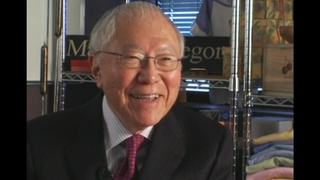Interviews
His experiences in Chicago after WWII
I don’t recall any real discrimination. So, Chicago was pretty good in that sense. And at school, I didn’t sense anything. There were a fair number of Japanese in the school. I’m not exactly sure why, but when the Japanese went to Chicago, they tended to cluster to just maybe for some kind of a feeling of ease that they went together. So, at this high school, there were a fair number of Japanese also.
Date: February 10, 2004
Location: California, US
Interviewer: Gwenn M. Jensen
Contributed by: Watase Media Arts Center, Japanese American National Museum.








